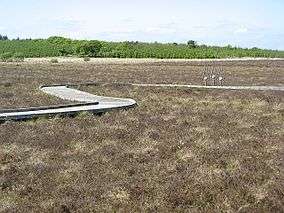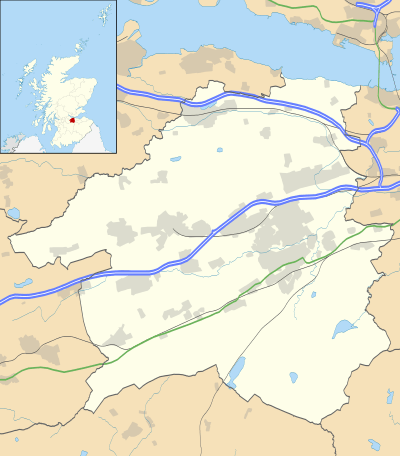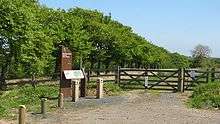Blawhorn Moss National Nature Reserve
| Blawhorn Moss National Nature Reserve | |
|---|---|
 Boardwalk in Blawhorn Moss National Nature Reserve | |
 | |
| Location | Blackridge, West Lothian, Scotland |
| Coordinates | 55°53′38″N 3°47′08″W / 55.894016°N 3.785450°WCoordinates: 55°53′38″N 3°47′08″W / 55.894016°N 3.785450°W |
| Area | 149 hectares (370 acres) |
| Governing body | Scottish Natural Heritage (SNH) |
| Blawhorn Moss National Nature Reserve | |
Blawhorn Moss National Nature Reserve encompasses the largest and least disturbed raised bog in the Lothians. The Reserve lies northwest of the village of Blackridge, 4 miles west of Armadale in central Scotland, and is owned and managed by Scottish Natural Heritage (SNH).
A large part of Blawhorn Moss, extending to around 69 hectares, has been managed as a National Nature Reserve by SNH since 1980. In 2001, SNH purchased a further 40.43 hectares, declared as an extension to the existing National Nature Reserve in 2008.
Flora and fauna
Blawhorn Moss provides an important habitat for wildlife and supports many of the plant species representative of bog habitat. A number of sphagnum mosses grow here, as well as heather, crowberry and cotton grass.
A variety of bird species breed on the Moss, including red grouse, snipe, curlew and redshank. Stonechat, skylark and meadow pipit are also regularly seen in the spring and summer months at the Reserve, along with a variety of butterfly, dragonfly and damselfly species.[1]
Management of Blawhorn Moss

In the 1940s, the whole surface of Blawhorn Moss was drained to make the site more appropriate for agriculture. Furthermore, fire damage occurring between the 1980s and 2001 further exacerbated the damage, leading to severe over-drying.[2]
Since the mid-1980s, the managers of Blawhorn Moss have been actively trying to improve the habitat at Blawhorn Moss through blocking the man-made drains that had allowed the water table in the area to drop, and which had left the area more susceptible to drought and fire.[3]
Peatland Restoration
As well as providing important habitat for wildlife, such as moorland breeding birds, healthy peatlands absorb carbon- what is often referred to as a natural carbon sink. In Scotland, peat soils are thought to contain nearly twenty five times more carbon than all other plant life in the UK.[4] Yet very few raised bogs in Scotland remain undamaged, as most have been affected by drainage for farming, forestry or by extensive peat cutting.
After the then Nature Conservancy Council (now SNH) purchased the western part of the moss in 1979, work has been ongoing to restore the hydrology of the Moss using a number of methods, such as removing trees and shrubs and blocking ditches and drains.
References
- ↑ http://www.snh.org.uk/pdfs/publications/nnr/The_Story_of_Blawhorn_Moss_National_Nature_Reserve.pdf
- ↑ http://www.snh.gov.uk/docs/A1222355.pdf
- ↑ http://www.snh.gov.uk/docs/A1222355.pdf
- ↑ http://www.snh.gov.uk/climate-change/taking-action/carbon-management/peatland-action/why-are-healthy-peatlands-important/
External links
| Wikimedia Commons has media related to Blawhorn Moss. |
- Blawhorn Moss National Nature Reserve - Scottish Natural Heritage